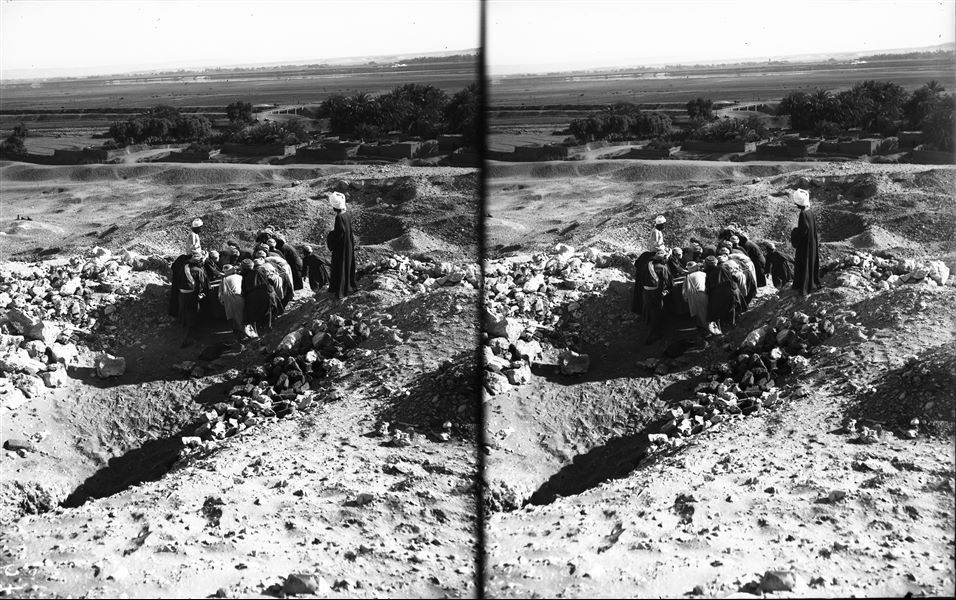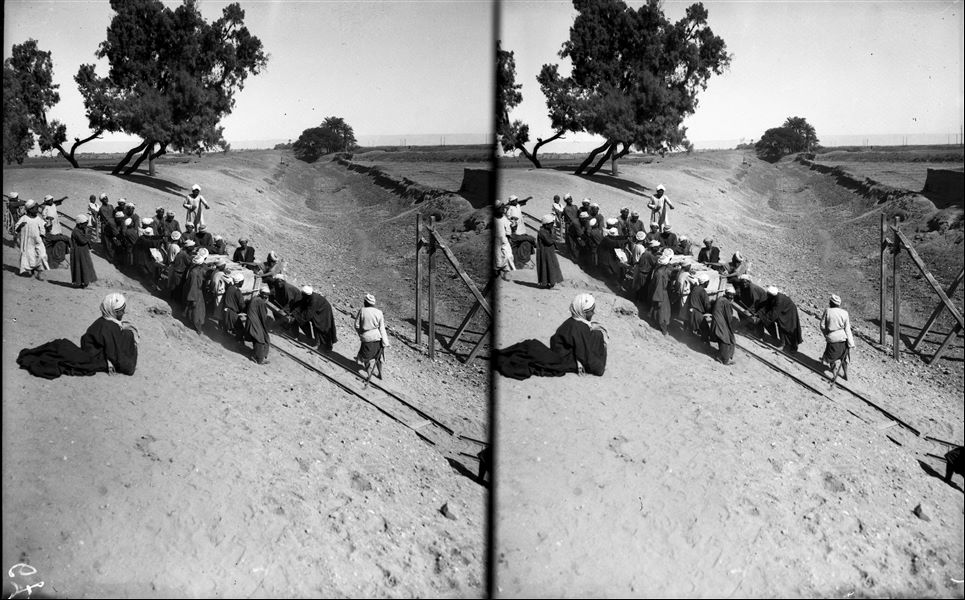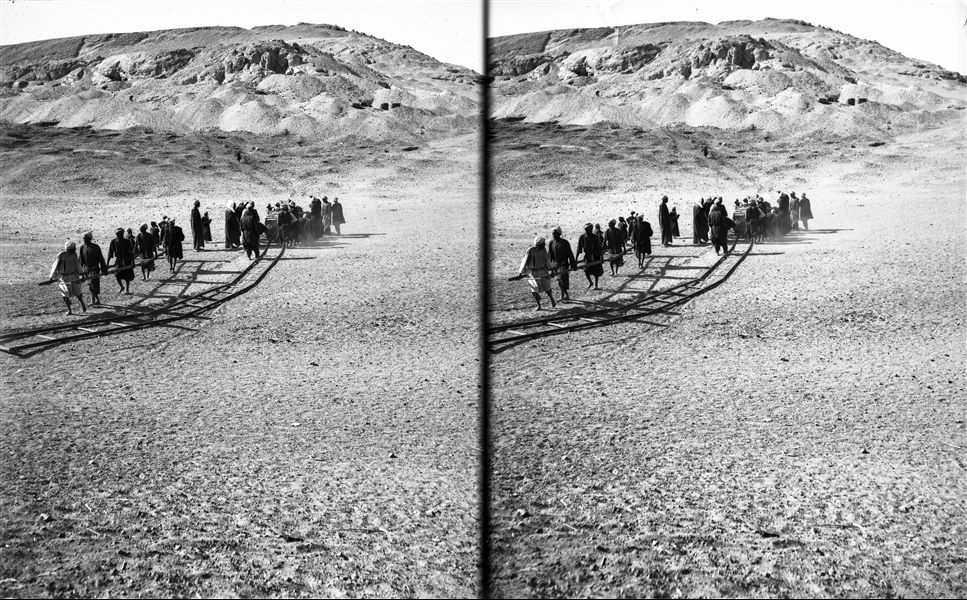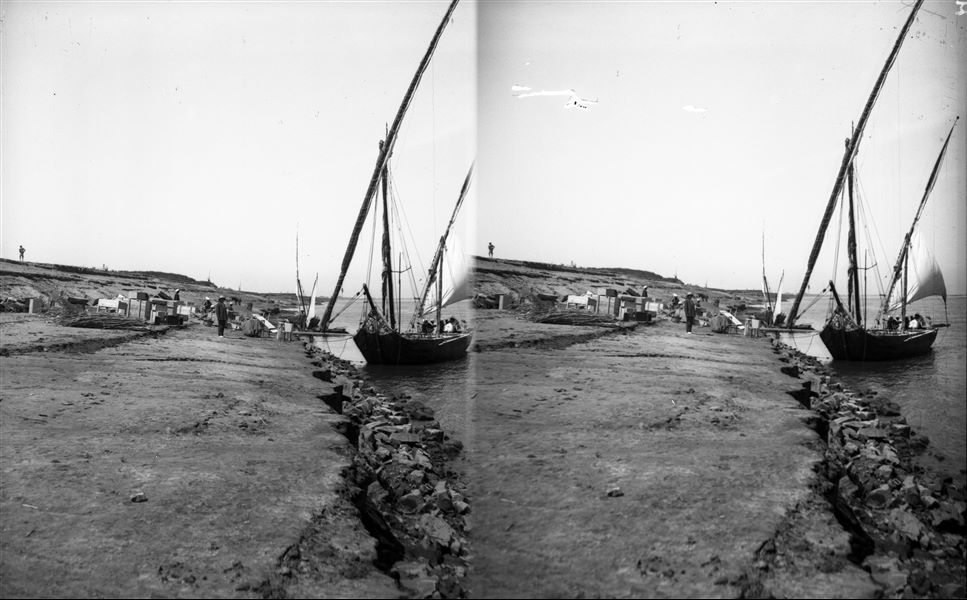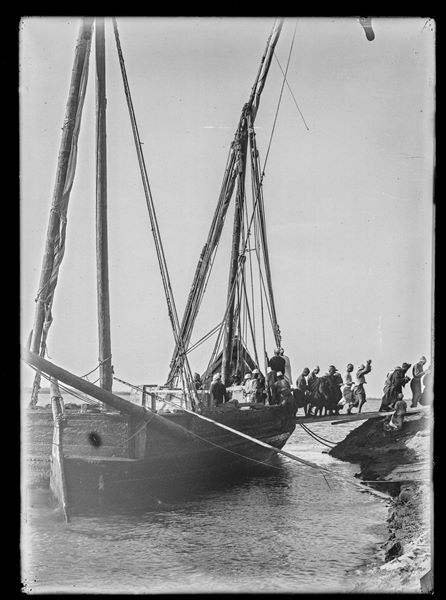Excavated finds, after being packed and placed in sturdy crates specially built on the excavation site, were laboriously transported towards the valley by dozens of workers. Schiaparelli excavations.
To facilitate the transport, "Decauville" railways were used when the slopes were not too steep and the terrain was suitable enough. Schiaparelli excavations.
Transporting heavy loads with "Decauville" railway tracks. Some workers push the load on the trolley while others work ahead of the group by positioning the next section of tracks to create a pathway. Schiaparelli excavations.
The transport by land ended on the banks of the river where the materials were loaded onto sturdy feluccas (a type of Egyptian sailboat) to be transferred to the warehouses which, for Gebelein, were at the Franciscan Missionary Station in Luxor. The picture shows some of the crates marked M.A.I. (Italian Archaeological MIssion) with their relevant sequential numbers. In the centre of the picture, under a parasol, Ernesto Schiaparelli can be seen followed by Giovanni Marro. Schiaparelli excavations.
Every year at the end of the excavation season, not only the antiquities but the mission's materials were transferred to warehouses: tents, beds, furniture and various equipment. The antiquities remained in boxes sealed by the official from the Egyptian Antiquities Service. Here the finds would wait until the following year to be assigned either to the Cairo Museum or the museum in Turin. Giovanni Marro is visible in the centre of the picture. Schiaparelli excavations.
Boat on the Nile River near Gebelein, possibly for transporting antiquities and the Italian Archaeological Mission’s materials. Schiaparelli excavations.
Boat travelling on the Nile River in the Gebelein area.
